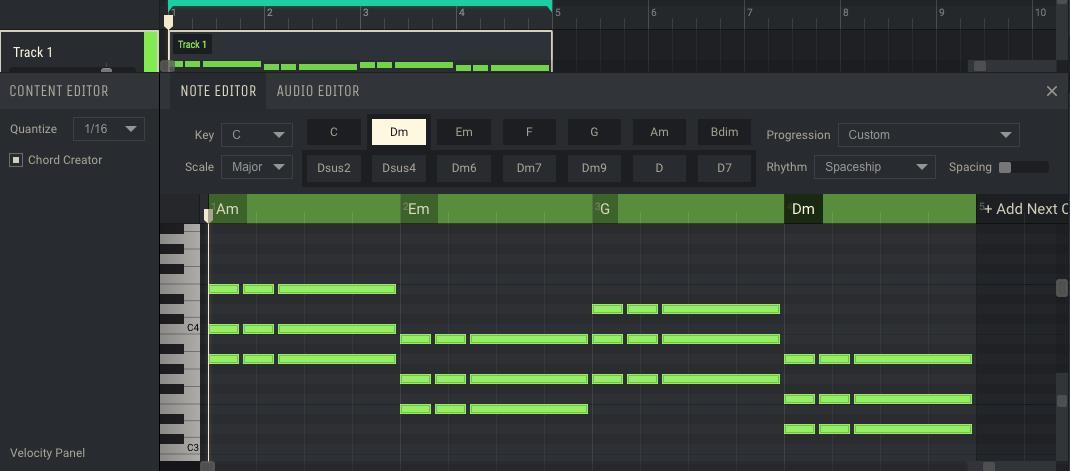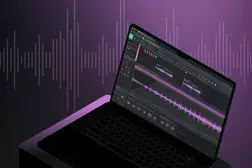How to make melody

Melody can be characterized as one of the most important, attractive, and catchy part of any song or a track. It can have a fast tempo or slow, energetic or relaxing, put a listener in happy or any other mood. Melody creates the atmosphere. It is the most common tool in music that artists use to communicate and express themselves, to reach the audience’s hearts and say what they want to say, it is a musical language itself. With a connection to a rhythm, a tempo and a harmony, melody speaks directly into the soul of a listener tells the story, creates a mood of the composition. It is hard to overestimate the meaning of a good melody, it is said a melody is a portal to the music.
In general, music is all about feelings, to be a musician as any creativity requires passion, vision, and feeling. No one knows better than you how to express yourself with music, but obtaining theoretical and practical knowledge and skills and following some fundamental steps can be an advantage and make the process of writing a composition faster. Melody is a most soulful context of music composition and its goal is to make listeners feel the vibe of an author. More detailed about what is melody, most common melody’s structures, types of melodies we have reviewed in this article https://ampedstudio.com/types-of-melodies/. Advice you to look through to have a complete picture of this element of music as at the current article we keep talking about melodies but from the point of the creation process.
Great if you already chose an instrument you want to play your future melody with. Sometimes it happens that you want to create a melody but are not sure yet, what instrument you are going to play it with, especially if you are an electronic music producer and there are plenty of various electronic instruments and synths available, so in this case, you can choose any that sounds pleasant to you and seems fit to you song or track composition. Later when the melody will be about to finish can try how it sounds with different instruments and make final decisions and corrections if needed. One more option is to start with a classic piano or a guitar if you feel like in your track there is a place for keyboard or string instruments, you will also be able to switch to another instrument later.
Compose within a particular scale
A scale is a basic definition in music built on tonal groups, that contains tones that you can create melodies and harmonies. And the peculiarity is the tones of each scale are organized and sequenced based on their pitch and in most cases, tones sound harmonic and that’s just magic for starter inspiration.
Decide which scale your melody should be. In the beginner mode advised to choose minor o major scale Cmaj or Amin for example. It is easy to start and find matching chords later. Play and feel what resonates with you more.
Pick a scale, create a simple motif with notes of the scale. Overlay it on your future track rhythm in case you have it in sketch already and see whether it sounds good together. The rhythmical part of the melody is very important. Well build drum section and pattern of a melody that suits rhythmically, this combination will make the sound of both stems more expressive. In working on a motif try to play up and down notes of the scale you chose, experiment with changing notes order, find what combination reflects the mood of your music idea better. With every note of a motif you can build chords accordingly to it within the same scale. Listen and see what is happening and notice transformations.
Decide what chords you will use as a primary for the current melody and in which order they will change, that is progression. There are number of commonly used chords progressions in popular music as these combinations of chords create specific atmospheres, moods, sounds good together, and develop progress in music composition.
Try various progressions
If you can play it on the keyboard with a left hand, right hand you can add and improvise some more elements over the top. As soon as you are in your melodies discovery journey keep on experimenting. Play and improvise and you will definitely find your melody.
Following next principles might be helpful while working on it:
Keep it balanced. Do not overload a melodic line. A good melody has a comfortable range to sing or play in. If melody contains large interval jumps, modulations, and other complicate elements then it probably will sound better with a more simple rhythm and vice versa.There can be some repeated parts in melody and in rhythm as well.
The principle of a melodic wave
The melody built on the alternation of ascending and descending movement is perfectly perceived.
Experiment with adding notes to the main chords. Change the length, order, and rhythm.
For those who cannot play any instrument and do not know notes, music theory and just got involved in writing music there is a wide range of computer helping tools for musicians.
It is perfect to use for beginners to get familiar with the most popular scales, choose a key tone for a track, discover chords, progressions, and principles of how it is built. With a fluent change of chords, progressions, and rhythms, you can create a melody with ease. A great creative tool for inspiration and learning.
Users of Amped Studio can enjoy music creation process operating with Chord Creator. Chord Creator is developed and provided for you by Amped Studio among a basic set of tools. It is just that simple, open studio and it is available online right there!

Operating with such kinds of generators and scalers you create and learn about chords, progressions, rhythms. Convenient to compose a melodic base of your track and improvise over it. Find here a more detailed review of an Online Chord Creator and its advantages.
Sometimes melodies are born instantly, just with acapella. Without the use of any musical instruments, the light of inspiration plays it in mind. The main instrument, in this case, is your voice and voice recorder to capture the idea. And then it may come to create chords for it, that is actually is a cool challenge to find the way how to realize your music sketches into life, or you can deliver this task to a professional musician who will help turn your captured “Hmmming” into a melody played with the keyboard. Remember that it is not necessary to perfectly play any musical instrument, read notes, and know music theory to create hit melodies.
Important to be able to hear, notice, feel it, and find a way to express it. Also, good melodies are enjoyable to listen to without words, as they speak by themselves.
When listening to the music of different genres pay attention to all of its parts, try to figure out the author’s approach to his track creation using musical tricks. Actually analyzing reference songs you like is a great part of learning music and mastering your musicproduction skills.










